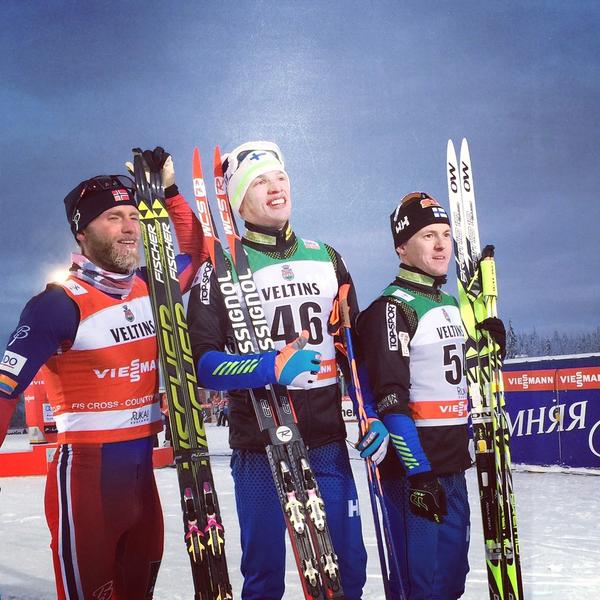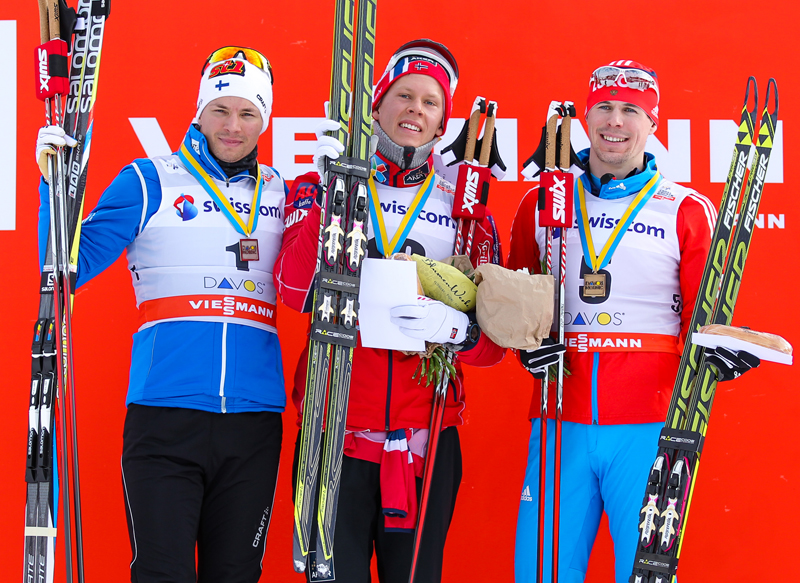
Finnish skiers have been using supplemental oxygen at their early on-snow camps high in the mountains, according to multiple Finnish news outlets.
Ilta-Sanomat checked in on the national cross-country ski team at a training camp in Val Senales, Italy, where a glacier offers skiing thanks to its location at 10,000 feet above sea level.
The skiers were training wearing backpacks full of oxygen, with tubes leading to facemasks which supplied the flow.
The newspaper reported that the team had also used supplemental oxygen at an August training camp in Pontresina, Switzerland.
Team physiologist Ville Vesterin explained that at such training camps, it’s not possible to live high and train low: athletes live high, and also train high. By providing oxygen, more ideal training conditions can be simulated.
“Additional oxygen can help you avoid the pitfalls associated with high-altitude training,” Vesterin told Ilsa-Sanomat.
The skiers reportedly use the oxygen primarily for the first 45 to 50 minutes of a workout, as their bodies adjust to to training in high-altitude conditions and overexertion could diminish the quality of the rest of the workout.

“It has been used since the 1990s, but the method to be used is new,” Vesterin told Kestävyys Urheilu. “Usability is better than with the old method.”
Martti Jylhä, a national team sprinter, seemed to be a fan of the setup despite the bulky look of the backpack which carried his two-liter oxygen tank.
“At the beginning of such a camp my legs are usually really heavy,” said last year’s 25th-ranked sprinter in the world to Ilsa-Sanomat. “This will help a lot. It interferes with skiing very little.”
You can see the setup in action in a video on Kestävyys Urheilu’s website.
But not everyone is as thrilled as Jylhä.
“It all seems a bit strange, in every possible way,” said Vegard Ulvang, the chair of the International Ski Federation (FIS) Cross Country Committee and a three-time Olympic gold medalist. “Meanwhile, there is no prohibition against it, and whether it is possible to create something prohibiting it, I do not know … I realize that it creates debate. At the same time, I doubt that this is in practice any benefit. The Finns believe they get more quality with this, but it’s small margins in question.”
The World Anti-Doping Agency (WADA) currently considers the use of supplemental oxygen while training to be similar to the use of altitude tents or hyperbaric chambers for recovery: it’s permitted.
Yet even some within Finland are skeptical that it could help them win medals in 2017, when they host World Championships in Lahti.
“When I heard about it, I thought right away that this does not feel quite right,” Henrik Byggmästar, the head of the Swedish-speaking ski association in Finland, told Finnish news service YLE. “I do not think it sounds legitimate.”
(Swedish is the mother tongue of about 5 percent of Finland’s citizens, or more than 250,000 people; a strong historical population built by both immigration and deliberate colonization, the “Swedo-Finnish” are considered a separate ethnic group.)
“[The masks] help so that when you are at high altitude you can maintain a higher exercise intensity,” Byggmästar said. “You recover faster and can train at an even harder pace than you might otherwise do. They are allowed, but maybe there are other things you could fix before you start with this in particular? … You have got to hope they know what they are doing.”
Chelsea Little
Chelsea Little is FasterSkier's Editor-At-Large. A former racer at Ford Sayre, Dartmouth College and the Craftsbury Green Racing Project, she is a PhD candidate in aquatic ecology in the @Altermatt_lab at Eawag, the Swiss Federal Institute of Aquatic Science and Technology in Zurich, Switzerland. You can follow her on twitter @ChelskiLittle.



